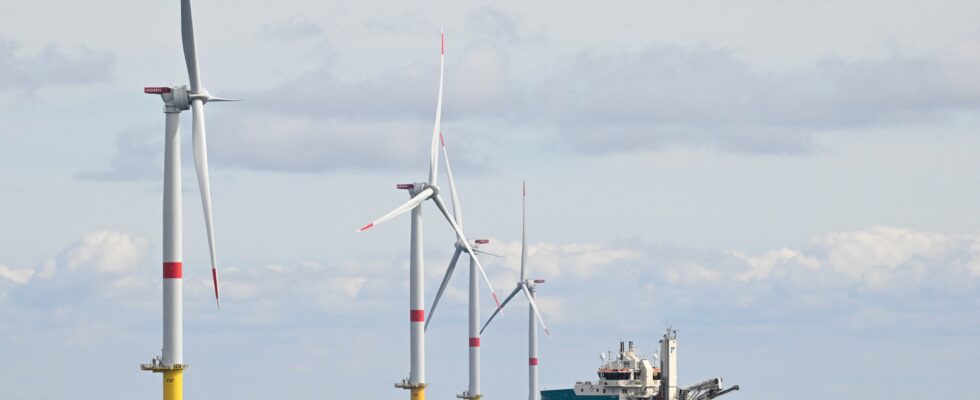There are many advantages to living on a peninsula. The Bretons know this better than anyone, there is no need to praise the splendor of their coastline swept by waves and winds. But “being at the end” has a price. When it comes to electricity, the counterpart is quite clear: Brittany has a less well-interconnected network than other regions. During cold spells and peaks in consumption, it is often one of the most vulnerable – and therefore under surveillance. Its historically limited local production has made it dependent on its neighbors. In 2022, it imported 66% of its electricity consumed from Normandy and the Pays de la Loire, according to the electricity transmission network manager RTEThis isolation is not inevitable, however, since Brittany increases its production capacity every year, boosted by the growth of renewable energies, and especially wind power.
The trend is not limited to the Breton territory. With the energy transition and the need for decarbonization, the French electricity geography is changing, slowly but surely. On the production side, it is the entire western coast of the country that is “gaining momentum”, notes Jean-Philippe Bonnet, deputy director of strategy, forecasting and evaluation at RTE. There is the impetus of wind power – offshore or on land – in Hauts-de-France, Normandy, Brittany and Pays de la Loire. Perhaps soon that of tidal turbines, these submerged wind turbines that use ocean currents to produce electricity, the development of which the sector wants to accelerate. And of course the promises of solar power in Nouvelle-Aquitaine, even if the Horizeo mega-project led by Engie and Neoen is still far from being finalized.
“We can set up an extraordinary production park, but it will be futile if we don’t have the cables to send the electricity where it is needed,” notes Raphaël Caire, lecturer at the Polytechnic Institute and the electrical engineering laboratory in Grenoble. Faced with this changing landscape, RTE knows that it will have to “significantly reassess” the structure of its network, especially the “major axes organized in a spider’s web in the context of the development of the nuclear power plant” from the 1970s to the 1990s. In its study Energy futures 2050the manager indicates the need for “greater west-east routing capacities”, particularly in windy periods. The same is true for south-north exchanges, which are more in demand during sunny periods, according to public consultation documents prior to the publication, planned for the end of the year, of its new ten-year network development plan.
Do not copy the German example
Without adequate investment, RTE’s preliminary analyses estimate that these increased flows could lead, by 2040, to “the emergence of significant congestion […]particularly on west-east axes”. That is to say, exceeding the maximum transit capacity of certain lines, requiring them to be lightened, with consequences on electricity production and additional costs for the entire system. A situation – not to be copied – that Germany is already experiencing, “faced with recurring problems between the north and the south of the country, and which costs between 3 and 4 billion per year to network managers”, recalls Jean-Philippe Bonnet.
“Integrating more and more variable renewable energies with uncertainties regarding their production forecast is a real challenge. This requires transforming the electricity grid into a smart electricity grid,” confirms Anne Blavette, CNRS research fellow in electrical engineering at the SATIE laboratory at the Ecole Normale Supérieure in Rennes.
In this equation, there is no room for inaction. Because these works on the network are often heavy and costly. “RTE must make the right assumptions,” warns Raphaël Caire. This exercise of creating a robot portrait of the electricity system in five or even ten years is not easy: it is necessary to integrate a multitude of factors, such as the increase in renewable energies, the evolution of consumption according to sobriety trajectoriesthe true scale of the nuclear revival… Not to mention the interconnections with neighboring countries. A colossal underwater project, the Celtic interconnectormust connect the French and Irish networks in 2027. Its entry point into France? The La Martyre substation in Finistère. A small revolution. For the first time, Brittany will no longer be “at the end”, but “in the middle”.
.
